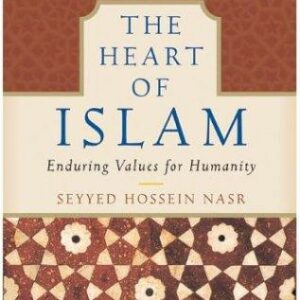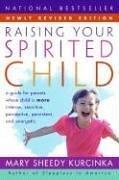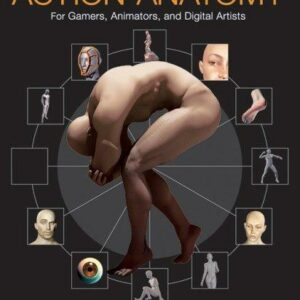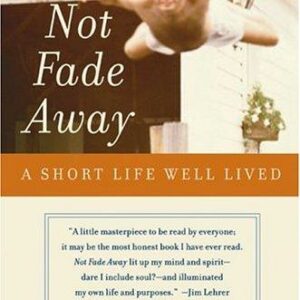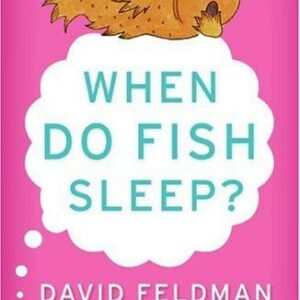The Nature of Life and Death
$18.00
| Title | Range | Discount |
|---|---|---|
| Trade Discount | 5 + | 25% |
- Description
- Additional information
Description
From “the Queen of Forensic Science” (The Wall Street Journal) comes a riveting blend of nature writing and true-crime narrative that explores the often shocking cases of a trailblazing scientist and investigator.
From mud tracks on a quiet country road to dirt specks on the soles of walking boots, forensic ecologist Patricia Wiltshire uses her decades of scientific expertise to find often-overlooked clues left behind by criminal activity. She detects evidence and eliminates hypotheses armed with little more than a microscope, eventually developing a compelling thesis of the who, what, how, and when of a crime. Wiltshire’s remarkable accuracy has made her one of the most in-demand police consultants in the world, and her curiosity, humility, and passion for the truth have guided her every step of the way.
A riveting blend of science writing and true-crime narrative, The Nature of Life and Death details Wiltshire’s unique journey from college professor to crime fighter: solving murders, locating corpses, and exonerating the falsely accused. Along the way, she introduces us to the unseen world all around us and underneath our feet: plants, animals, pollen, spores, fungi, and microbes that we move through every day. Her story is a testament to the power of persistence and reveals how our relationship with the vast natural world reaches far deeper than we might think.A New York Times Book Review New & Noteworthy Pick
One of Science News‘ Favorite Science Books of the 2019
“The Nature of Life and Death is one of those extraordinary books that will appeal to almost everyone. If you’re a Mary Roach fan, fascinated by the macabre and grotesque, you’ll get to follow Wiltshire into mortuaries and watch her pick apart cadavers. If you’re a Lab Girl fan, inspired by stories of women blazing new trails in science, that’s Wiltshire’s entire career. If you’re a gardener, you will love knowing how often botany has saved the day. And if you’re a crime fiction fan—well, you’ve found your new favorite sleuth.” —The Washington Post
“Crabby, brilliant and brittle, but also quite tender when it comes to the loss and pain of grieving families, Ms. Wiltshire seems to come straight out of a British detective series. She’s an eccentric who, after proving guilt in an Albanian gang murder, goes home, puts on her sweat pants, makes herself a dinner of beans and toast and cuddles with her cat. With a lead character like this, the science and crimes, while highly readable, are mainly stages and props for this engaging and enlightening one-woman show.” —The Wall Street Journal
“A British forensic ecologist, Wiltshire studies the natural world for clues to criminal activity: part Discovery Channel, part “C.S.I.” Her autobiography will change the way you view your environment.”—The New York Times Book Review
“Weaving science writing with true crime stories, The Nature of Life and Death is a must-read for true crime fans who feel burned out on the genre.” —Bustle
“Enjoy this book. It will leave its trace on you.” —Science Magazine
“Fascinating through and through, the tales Wiltshire shares are worthy of any true-crime novel or TV drama such as NCIS.” —Science News
“Wiltshire writes like the scientist she is…the subject matter is fascinating, and Wiltshire makes a good case for curiousity as she steps through the process of tracking details and solving mysteries.” —Outside Magazine
“How this mild-mannered but fiercely dedicated academician came to muck around in woodlands, bogs, and parks searching for clues that would otherwise escape the less botanically astute makes for a fiendishly good memoir. Though many scenes are not for the fainthearted, Wiltshire’s truthful and candid attitude provides a stellar glimpse into this fascinating field of criminal investigation.” —Booklist
“[The Nature of Life and Death] is reminiscent at times of Mary Roach’s Stiff: The Curious Lives of Human Cadavers and also the television show Bones….Fascinating for readers who enjoy science, including ecology and botany, and who aren’t too squeamish.” —Library Journal
“An autobiography well supplied with personal opinions along with entertaining if sometimes squirm-inducing triumps of criminal investigation.” —Kirkus Reviews
“What is forensice ecology? Wiltshire…answers that question in her gracefully written first book for a general audience….CSI fans will be enthralled.” —Publishers Weekly
“Worthy of any true-crime novel or TV show, this type of clue hunting can be very integral in the field of forensics.” —Medical Daily
“This is a deep book, in some respects, but it’s also engaging and delightfully nerdy. No true crime fan should be without it. Science lovers will relish it. The Nature of Life and Death should not be left behind.” —”Bookworm Sez”
“The Nature of Life and Death draws the reader into the invisible world of a forensic ecologist who utilizes state-of-the-art science to solve grisly crimes that would have otherwise been unsolvable. Fans of true crime such as CSI and Forensic Files will be in for a treat as Pat gives you a personal glimpse into her world and philosophy of life.” —Steffanie Strathdee, PhD, and Thomas Patterson, PhD, coauthors of The Perfect Predator: A Scientist’s Race to Save Her Husband from a Deadly Superbug
“Capturing and studying the almost-invisible clues that nature leaves on victim and suspect alike, Wiltshire uses her deep knowledge of botany and palynology to recreate crime scenes and establish the guilt—and sometimes innocence—of the accused. The Nature of Life and Death is a compelling mystery, an ode to the natural world, and an engrossing account of a female scientist whose passion, expertise, and deep curiousity created an entirely new branch of crime solving.” —Cat Warren, author of the New York Times bestseller What the Dog Knows: Scent, Science, and the Amazing Ways Dogs Perceive the World Professor Patricia Wiltshire is a forensic ecologist, botanist, and palynologist, and also has a background in environmental archaeology. She has worked with every police force in the United Kingdom, and on many high-profile cases. She regularly lectures at conferences and scientific meetings all over the world, and is active in research and publishing, as well as university teaching. Wiltshire is an experienced expert witness for both the prosecution and defense, and is a registered expert with the National Crime Agency. She is a fellow of the Chartered Society of Forensic Sciences, the Royal Society of Biology, and the Linnean Society.
Chapter 1
Beginnings
Imagine, for a moment, that you are walking in a winter wood. The ground is soft beneath your feet; something catches your eye-something untoward, something not quite natural, in a depression just off the beaten track. Perhaps you are here walking your dog (this is the way so many stories start). Perhaps the dog hurtles off into the undergrowth and whines. As you fight through the brambles to reach it, you have a moment of foreboding-and, looking down, you realize why . . . for there in front of you where the dog has frantically scraped the soil, the lifeless hand of a body is exposed, its pallor stark against the black humus.
It was not so very long ago that identifying the culprit in a crime like this might have been possible only by the testimony of witnesses or the confessions of the accused. Within living memory, and in the absence of any clues to its identity or to connect it to a potential suspect, a body discovered in a shallow grave might have remained a mystery forever. But times move on. The world of forensic detection gathers pace.
We are all familiar with the idea of fingerprints, and they have even been found in prehistoric pottery. The ancient Chinese and Assyrians used fingerprints to establish ownership of clay artifacts and, later on, documents. Sir William Herschel insisted on having fingerprints as well as signatures on civil contracts when he was a British administrator in India in 1858. Fingerprint analysis was firmly established by the late nineteenth century and, in 1882, Alphonse Bertillon, a French anthropologist, was routinely recording fingerprints on cards in his academic research into variation in people and, by 1891, the Argentine police had started fingerprinting criminals. The field developed apace and, in 1911, fingerprinting became accepted by the US courts as a reliable method of identifying individuals. Fast forward to 1980 to the first computerized database of fingerprints, NAFIS (National Automated Fingerprint Identification System), established in the United Kingdom and the United States.
In the 1990s, another quantum leap was taken in forensic detection with a development of DNA profiling. This, like fingerprinting before it, enabled the unique imprint of an individual to be captured but by taking samples of blood, semen, body cells, or roots of hairs. This development transformed the world of forensic detection, making identifying unknown victims, like our body in the winter wood, or connecting a person to a crime scene, much easier. Make no mistake about it, these were seismic moments in the history of forensic detection. Murderers who might otherwise have gone free have been imprisoned because of these advances. Rapists who would have gone on to rape again were caught and put behind bars. So too were innocent parties exonerated for the crimes of which they had been unjustly accused. Step by step, and with plenty of backslides along the way, police work got closer to the truth.
Fingerprints are not always found at a crime scene, especially if that crime is being perpetrated by somebody who is forensically aware and wears gloves, or covers their tracks behind them. And neither is DNA evidence as omnipotent or omnipresent as many people think; there might be no trace at all of an offender left behind at a crime scene-no hair, blood or semen, nor any other body fluids or tissues-so that building up a genetic profile of an assailant is just not possible.
Yet . . . what if there was another way to connect people and places, to exonerate the innocent and indicate somebody’s guilt? What if, aside from fingerprint and DNA evidence, there were other traces left on us that could corroborate one version of events over another? And what if it was so pervasive that, no matter how forensically aware a criminal was, they could never quite shake it off?
Imagine, again, that you are back in that winter wood. As you push through the brambles and overhanging branches to reach the body, the sleeve of your coat rubs up against an oak tree, collecting the microscopic spores and pollen that have become impacted in the crevices of the bark. As you scramble down the slope, your boots collect soil smears and crumbs in which are locked the pollen and spores that rained down on this patch of woodland recently, as well as in past seasons. That soil will also contain the multitude of living things that have made the soil their home, or fragments of the dead things that lived there before.
As you crouch down to make sure of your discovery, your hair brushes past twigs and leaves hanging over the body, picking up whatever pollen, spores, and other microscopic material have fallen onto their surfaces. Your traces on the landscape-the footprints you leave behind, the hairs and fibers you shed-might be easily obscured or overlooked. But what about the imprint the landscape has left on you? What if someone was able to retrieve and identify those microscopic traces, and visualize that place, or another even further afield, from the imprint it has left on your body and clothes?
Now imagine you are the killer. What traces of the landscape where you left your victim are you carrying with you, unwittingly, wherever you go?
This is where I come in, and where my own story dovetails with the history of forensic detection. In 1994, I was an environmental archeologist at University College London. Then, things changed.
It has been nearly fifty years or more since I began formally studying the world of plants, though the truth is, my love affair with the natural world reaches back much further. Even as a little girl, no matter how much I read about the natural world, I always wanted to know more. There is always so much more to be had; it is still the same for me now. This is frustrating because you can never reach the summit. Nobody can. The climb is grindingly hard, and it continues forever.
I have spent much of my working life hunched over a microscope, scanning sample after sample, trying to determine the mixtures of palynomorphs-microscopic particles, including pollen grains and fungal spores-that have been stained red, embedded in jelly, and spread upon my slides. To the lay observer, what I am looking at might appear nothing more than a chaos of differently shaped blobs and splodges, but to a palynologist, one who studies pollen and other palynomorphs, these represent elements from the diverse breadth of the natural world.
Look at a pollen grain through the lenses of a high-powered microscope, and few people would fail to remark upon the strange, complex beauty of the minuscule world that was revealed to them. One pollen grain might be an orb pitted with tiny holes, while another may be shaped like a dumbbell, its wall perforated with gradations of apertures. As well as having varying kinds and combinations of holes and furrows which, themselves, might be of different size and form, the surface wall of a pollen grain might have intricate ridges of swirls, stripes or wrinkles, or networks of little columns, tracing the surface. There might be simple lumps; these may have spines, and even those spines might have spines themselves. The simplicity or complexity of form and sculpturing allows us to identify and classify these tiny products of the male cone of the conifer, or the anther of a flowering plant.
You may marvel at these tiny, often beautiful specks which are so essential to the continuation of the species. Perhaps you might even get carried away in some romantic fantasy. But, much to the chagrin of my very romantic husband, I am rather pragmatic and down to earth. I pride myself on “seeing it as it is” and try to banish any cognitive bias in the interpretation of what I see. And this is because, in my profession, these grains are much more than a stage in the life cycle of a plant or fungus. To me, they are the foundation of the stories I unravel for the police. They are the telltale signs that reveal you were not where you said you were. They are whispers telling me that you are lying or twisting truths. They are the threads that, woven together, can create a reasonable explanation of what and where, who and how. When a crime has been committed, my role is to read and present the possibilities told by the grains of pollen, the fungi, lichen, and microorganisms that have been retrieved, to try and piece together facts from the natural world.
In the past, I have described myself as a professional solver of puzzles, and the analogy is not so very far from the truth. In this profession, being accurate matters, but identifying one pollen grain or spore from another can be a taxing endeavor. One always tries to be accurate and, if there is any doubt, it is essential to use reference material of properly identified plants. Errors could contribute to someone incorrectly losing or retaining their liberty, and so long hours of my life are spent studying the infinitesimal, trying to differentiate one grain from the next. This is far from straightforward.
An ancient family such as the Rosaceae (the rose family) invariably has pollen grains with three furrows, three pores, and a surface with stripy whorls. The patterns of one species can merge into another so that it is difficult to be sure whether you have bramble, rose, or hawthorn, although it is fairly easy to separate this group from that containing blackthorn, plum, and cherry, where the stripy whorls are more defined and easier to see. A crime scene might be in a cherry orchard but you could never, hand on heart, claim that the pollen you have under the microscope was truly from a cherry tree because there are too few differences to differentiate from, say, blackthorn. Spores from “lower” plants such as mosses have even fewer critically distinctive features to separate them. Plants that evolved later than mosses, like the ferns and their allies, have more differentiating features than the mosses, but fewer than the conifers. In turn, the conifers have fewer than the flowering plants. This is a perplexing world with almost infinite possibilities, and yet somehow we must find a way through.
The chances are you have never encountered, perhaps never heard of, anybody in my profession. Forty years ago it did not exist. In most countries of the world, it still does not. Though I am sometimes known by other names-one sobriquet that springs to mind is “the snot lady,” after a method I developed to obtain pollen grains from the nasal cavities of the dead-I think of myself first and foremost as a “forensic ecologist,” one who utilizes and interprets aspects of the natural world to aid detectives in their business of solving crime. Where bodies are discovered buried in a shallow woodland grave, mummified in a suburban coal cellar, or dredged from a fenland river, I am called upon to interrogate the natural surroundings to provide clues as to what may have happened on those fateful days. Where killers have confessed to their crimes but the crime lacks a body, I am tasked with identifying the traces the natural world may have left behind on a killer’s clothing, his shoes, his tools, and his car, to discover where a victim has been buried or just dumped with some cursory attempt at camouflage. Where violent or sexual assaults have taken place, I am asked to investigate the way that nature’s telltale traces of pollen, fungal spores, soil, microorganisms, and more can help us point toward innocence or guilt by placing the victim or culprit in either one landscape or another. And though I was not the very first person to utilize plant and animal sciences to help the police secure a conviction, since that memorable day in 1994, it has been my life’s work to pioneer the field here in the United Kingdom, pushing it in new directions and defining the protocols for best practice for those to come.
This, then, is my territory: I operate at the interface where the criminal and the natural world interact.
Because of the tediously frequent programs dealing with crime on TV, many people seem to have an acute interest, and considerable knowledge, about death. They have seen hundreds of sham dead bodies on the screen and, perhaps, have become desensitized to visions of the corpse. When in contact with death regularly, you never become truly desensitized and many TV productions seem just trivial, silly, and variously inaccurate.
There is, in my opinion, an absurd assumption among many that death is just another staging post on the long journey on which all our eternal souls are traveling. This is not something I believe. In an age not so very long ago, an age that I remember well from my churchgoing childhood, people needed beliefs like this to help them face the greatest truth of all-that our bodies are but minerals, energy, and water. That, at the end of all things, energy, the life-force, will cease to flow, and our bodies, which contain our minds and memories of all that we are, will break down into their constituents and crumble back into the great mixing bowl of natural elements, from which all living things have emerged. Most of us do not like to acknowledge, and may never have even given it a thought, that the components making up our bodies and minds, the fundamental things that we think of as who we are, once belonged to something else and that, after we are gone, they will be put to another use. But this does not depress or disturb me. For me, it is the ultimate in recycling and, therefore, reincarnation, and it will happen to us all whether we have religion or not. This is just nature, and there is more beauty in this, cold and ruthless though some might find it, than in any fanciful and impossible-to-corroborate stories of the ever-after.
The only life after death is that which is made from the constituents of our bodies, released to the world by our own deaths, so that they can be used again, and again, and again. Think of your body as a fountain where water is drawn from a reservoir. Imagine that that water spurts out in a pattern which is maintained by the pressure and shape of the fountain nozzle. The template of the fountain is your body, your life itself; but, turn the pressure off and the water will fall away, back to the reservoir. That water is analogous to the food and fluid you consume to provide energy and give you form. That form is transient, and after a brief few moments of glorious cascade, it may swirl or just dribble away, but it will inevitably join that reservoir again. If the nozzle is changed, a different template is made-a different “life” is formed. Our bodies are like the shape of the fountain, with energy and material coming in and flowing out. The “water” that makes us up will always go back to the reservoir.
US
Additional information
| Weight | 8.6 oz |
|---|---|
| Dimensions | 0.6400 × 5.4700 × 8.2200 in |
| Imprint | |
| ISBN-13 | |
| Author | |
| Audience | |
| BISAC | |
| Subjects | criminal justice, forensic, crime books, true crime book, autobiographies, feminist gifts, biographies of famous people, SCI011000, biographies and memoirs, biographies, true crime books, forensic science, biography and autobiography, Murder investigation, crime scene investigation, criminal investigation, criminal procedure, international law, true story, crime, true crime, BIO026000, biography, Memoir, biology, murder, conspiracy, women, scientist, forensics, nature writing, botany, women in STEM, true stories, women in science, science books |
| Format |


